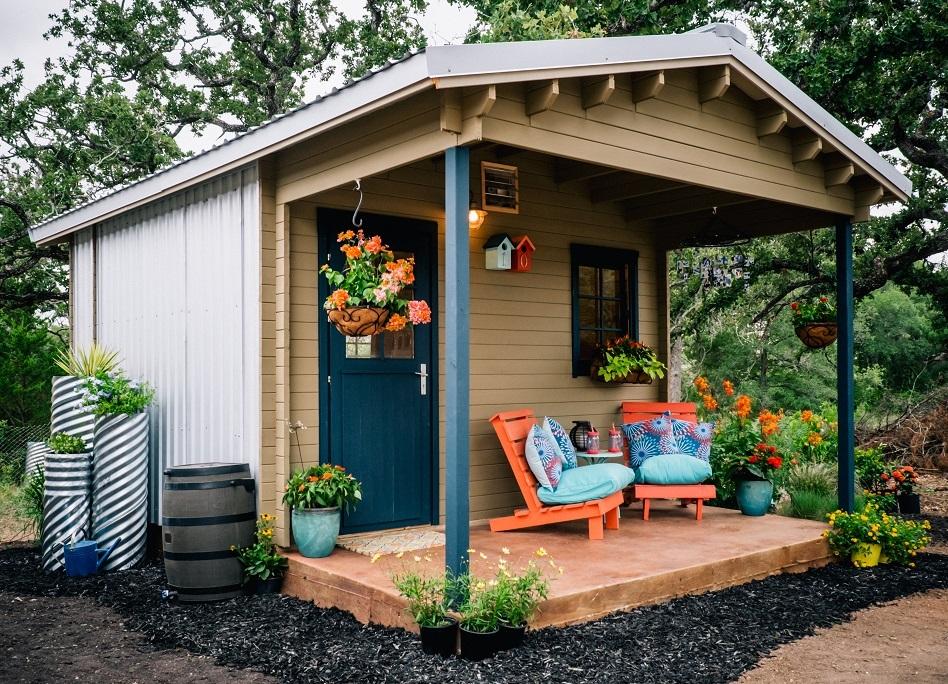
By Jerry Nelson
Following years of anticipation, East Austin’s Community First Village opened on April 27. The brainchild of Alan Graham, the village is a groundbreaking development meant for Austin’s homeless population.
The park is located on Hog Eye Road in Austin and sits on 27 acres. Consisting of over 135 homes, each dwelling is between 144 and 180 square feet and includes a sleeping area and a porch. The residents have access to outdoor kitchens, private bathrooms, showers and a laundry. The village also has a medical center, amphitheater, a wood workshop, chapel, market and a communal garden.
About 45 people are already living in the village, where rent starts at $220 a month. At least 150 more are expected to call the community home by the end of 2016. Volunteers expect the community to reach its full capacity of 250 by Spring 2017.
Designed to bring affordable and sustainable housing to the region’s homeless, Community First has been a dream of Graham for years. In his role as CEO of Mobile Loaves and Fishes (MLF), a nonprofit that provides meals to homeless populations, he identified a need for more permanent housing.
Graham was named 2015’s Austinite of the Year for his creative approach to addressing one of the root causes of homelessness. It's not just about giving people a roof over their heads, as shelters and hostels can do, but also giving them a sense of stability, independence and, most importantly, community.
Each cottage is 12 feet by 12 feet and has a wall socket and ceiling light. The homes are designed for natural cooling and airflow to minimize power use.
Close to the communal garden, beehives and chicken operations thrive under the care of community residents and volunteers. Dozens of chickens live in a large indoor coop made of repurposed materials and also have a larger, shaded yard. A movable rabbit hutch helps fertilize the raised garden beds which grow a variety of vegetables and herbs. The vegetables and eggs are sold daily on Austin’s streets.
Future plans call for a memorial garden and columbarium as well as an aquaponics fish operation.
Community First experienced some early problems when potential neighbors turned down prospective locations. Observers who work with the homeless say it is vital to approach necessities such as shelter before trying to resolve concerns such as mental illness and substance abuse.
Homeless villages not welcome everywhere
While volunteers and nonprofit groups are working to house the homeless, some agencies are doing all they can to sweep the homeless off the streets and into hidden housing facilities.
In summer 2014, a whistleblower who worked inside the Los Angeles Department of Health told Info Wars that city officials planned to forcibly remove homeless people from the streets and house them in facilities from which they cannot leave. Pointing to a page on the Health Department’s official website, the whistleblower reported how “roving teams” were meant to help provide short-term housing to homeless DHS patients.
The idea of forcing homeless people from the streets and into facilities has been taking place across America. In 2015, the city of Colombia, South Carolina, voted to make homelessness a crime. The homeless were given the option to either enter a shelter on the edge of town or be sent to jail. Over 45 cities throughout the country have already made feeding the homeless a crime and some cities, such as Camden, New Jersey, are bulldozing entire homeless encampments.
Image credit: Community First Village
Jerry Nelson is an American freelance writer and photographer covering social justice issues globally. When not traveling, he lives in Buenos Aires with his wife Alejandra and their cat, Tommy. Follow him on Twitter.
TriplePundit has published articles from over 1000 contributors. If you'd like to be a guest author, please get in touch!














